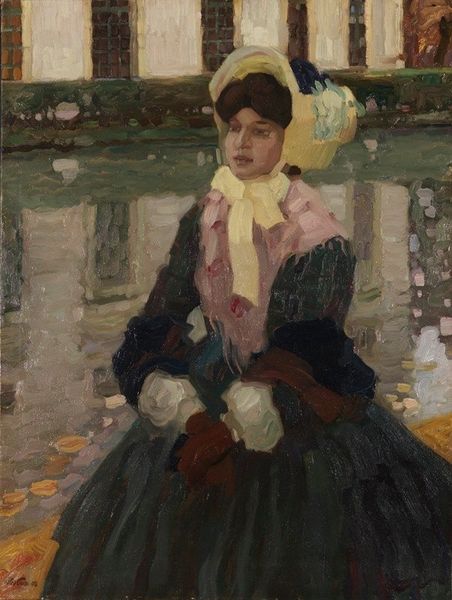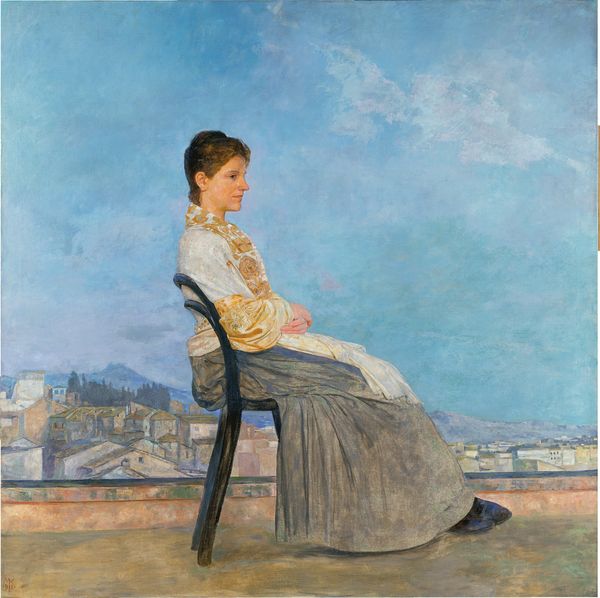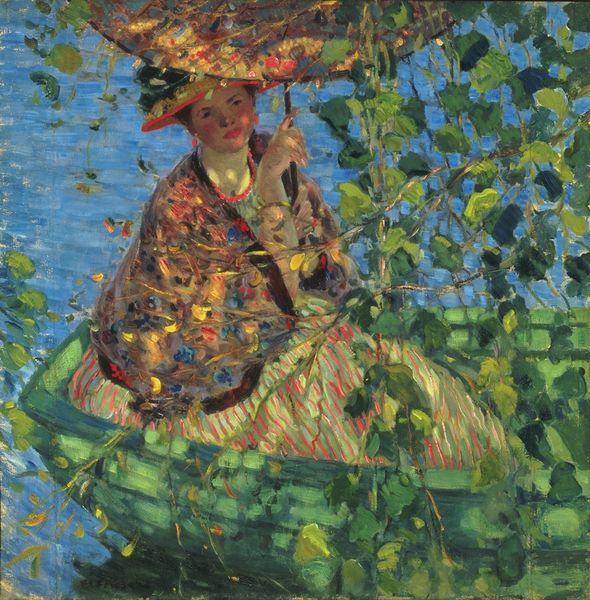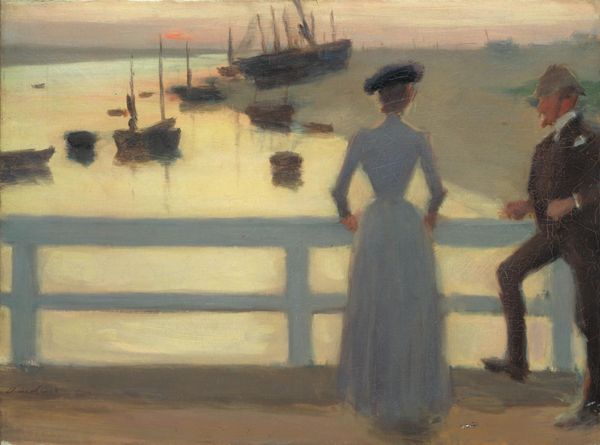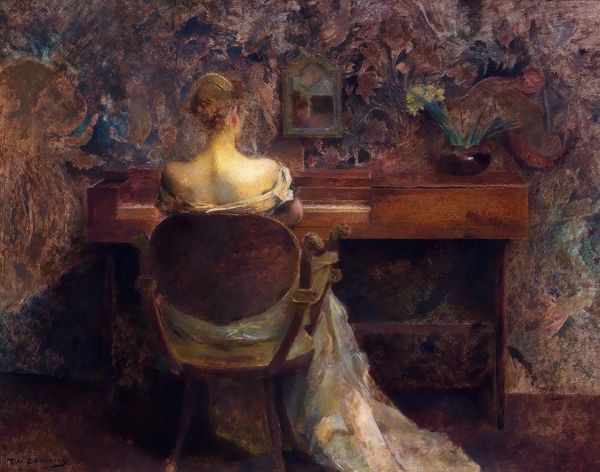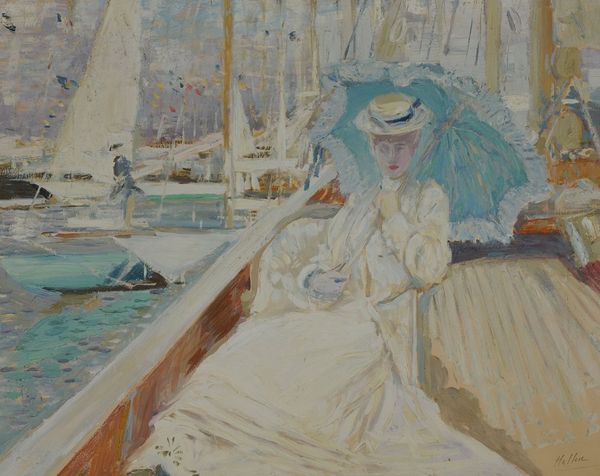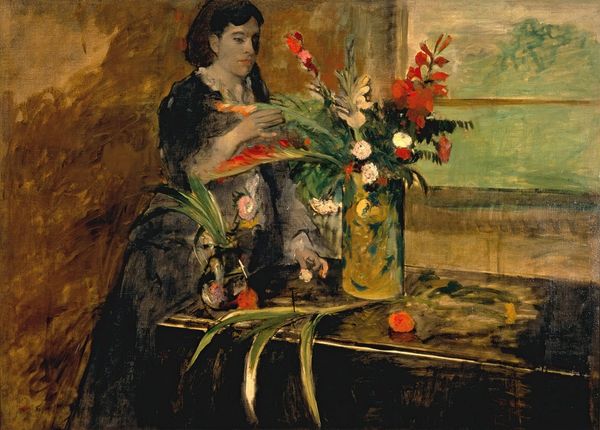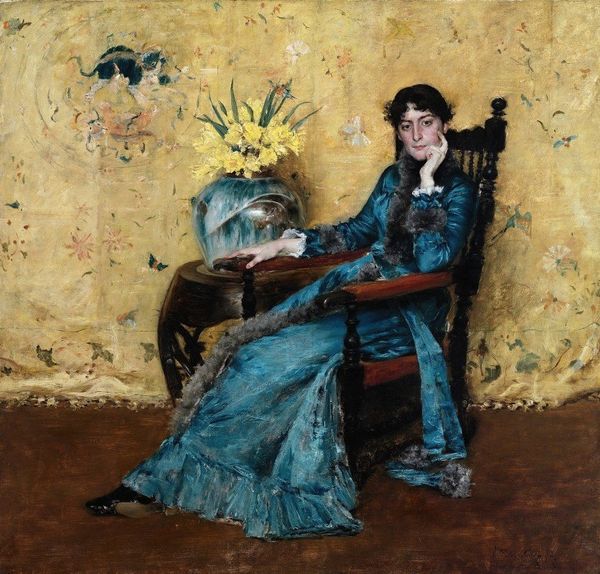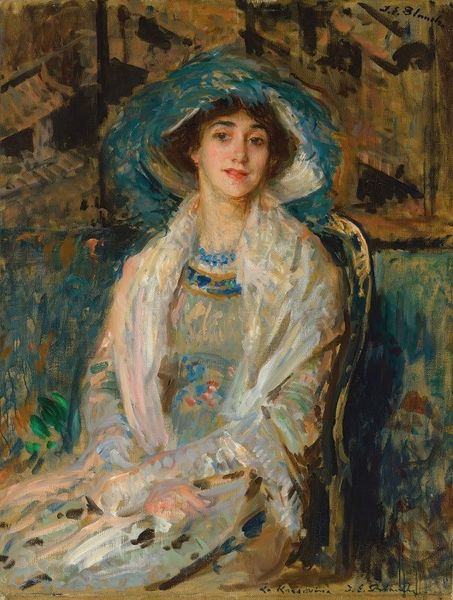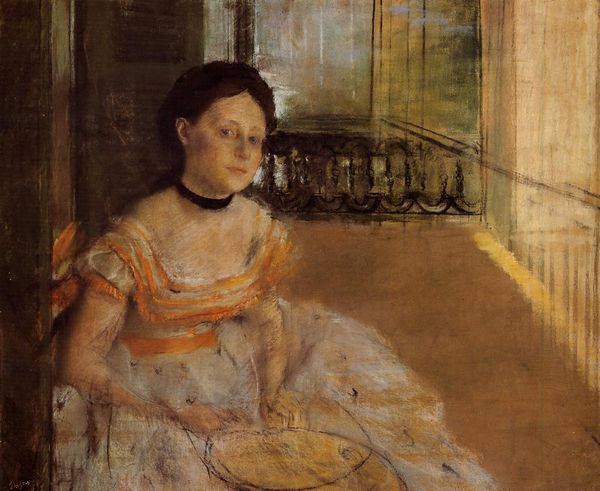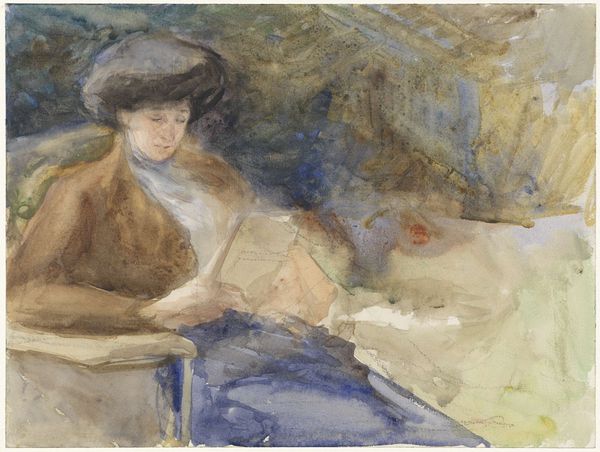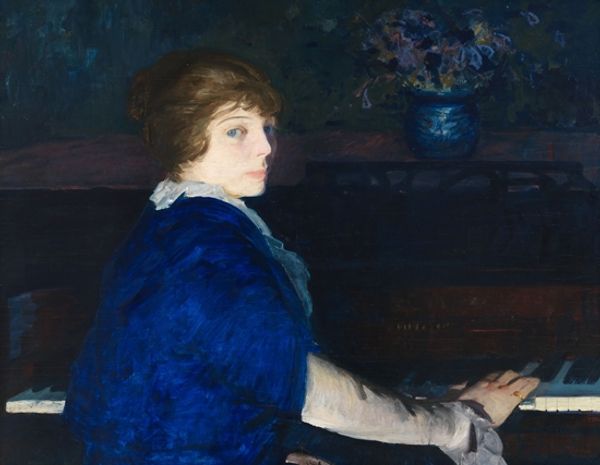
oil-paint
#
portrait
#
gouache
#
figurative
#
impressionism
#
oil-paint
#
painted
#
figuration
#
oil painting
#
cityscape
#
genre-painting
Copyright: Public Domain: Artvee
Curator: This is Jean-Louis Forain’s “Woman On A Yacht,” an oil painting dating to around 1883. What’s your immediate take on it? Editor: The mood is surprisingly melancholic, wouldn’t you say? Despite the implied opulence of the setting – a yacht, the soft glow of lanterns, even the woman's dress, there's an undeniable air of quiet loneliness. Curator: It’s intriguing how Forain captures this subtle feeling of alienation. He painted during a time of rapid social and economic change in Paris, so his art often speaks to those shifting dynamics within different social groups, painting what could be seen as “genre paintings." Do you feel it's in that conversation? Editor: I think we need to consider how women were visually represented during this time. Her apparent idleness isn’t merely decorative; it reveals the restricted social roles available to bourgeois women. Her stillness amidst the city’s lights could be seen as the lack of personal and intellectual movement. And this can extend to even current readings and dialogues about modern representations of women, if you look at how modern issues impact representation of feminine identifying folks. Curator: That’s interesting! I'm so focused on how Forain navigated the art market, often depicting scenes of modern life that appealed to the sensibilities of the middle class, I miss the bigger socio-historical picture sometimes. You're suggesting the woman, in this supposed leisure setting, actually symbolizes the limitations of her social position? Editor: Precisely. It's crucial to recognize that her identity and freedom is deeply contextualized in gender and class dynamics. Look closely at how she holds the umbrella and how close is the scenery in front of her and how tiny is the city view... these are all important elements in her social analysis! Curator: Indeed. Seeing her confined on the yacht, away from city, allows the possibility for new conversations. In this artwork, what we think is supposed to portray joy, leisure and privilege is deeply routed in constraint. Thanks, that changed how I look at the work. Editor: My pleasure! Always keep in mind that art not only represents but also interrogates and challenges established conventions and perceptions, leading to the need of an in-depth analysis when creating new ones.
Comments
No comments
Be the first to comment and join the conversation on the ultimate creative platform.
